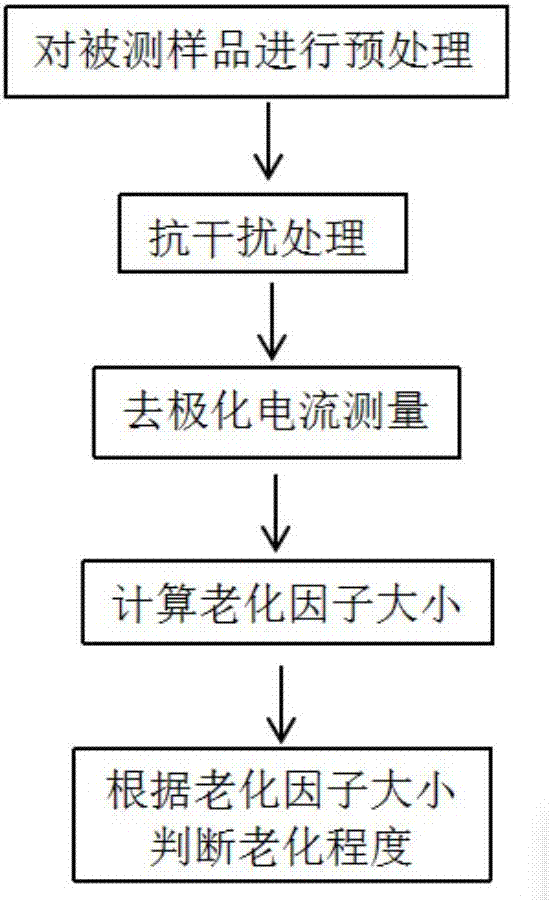Measurement method for detecting degree of aging of XLPE cable based on depolarization current approach
A technology of aging degree and measurement method, which is applied in the direction of measuring current/voltage, measuring electricity, measuring device, etc., can solve the problem that the measurement results of insulation performance are not accurate enough, cannot accurately reflect the aging degree of the cable, and affect the insulation life, etc. Observe the effect of the direction of the curve
- Summary
- Abstract
- Description
- Claims
- Application Information
AI Technical Summary
Problems solved by technology
Method used
Image
Examples
Embodiment Construction
[0026] The measurement process can be divided into two steps: measuring the depolarization current of the offline cable discharge and calculating the aging factor A to judge the aging degree of the XLPE cable. First, charge and short-circuit discharge the XLPE cable samples of different specifications. During the charging process, the sample is applied with a voltage of U 0 The polarization starts with the step excitation, and the continuous polarization time is t p , the current flowing through the sample at this time is the polarization current i p . After the voltage is removed instantaneously, the test object produces a discharge current in the opposite direction due to short circuit, which is the depolarization current i d . Then calculate the aging factor A of the cable based on the depolarization current, and judge the aging degree of the cable through the relationship between the aging factor A and the insulation condition.
[0027] The experimental setup for PDC (...
PUM
 Login to View More
Login to View More Abstract
Description
Claims
Application Information
 Login to View More
Login to View More - R&D
- Intellectual Property
- Life Sciences
- Materials
- Tech Scout
- Unparalleled Data Quality
- Higher Quality Content
- 60% Fewer Hallucinations
Browse by: Latest US Patents, China's latest patents, Technical Efficacy Thesaurus, Application Domain, Technology Topic, Popular Technical Reports.
© 2025 PatSnap. All rights reserved.Legal|Privacy policy|Modern Slavery Act Transparency Statement|Sitemap|About US| Contact US: help@patsnap.com



